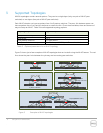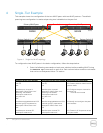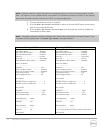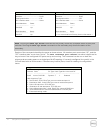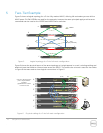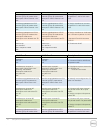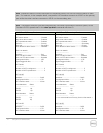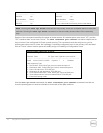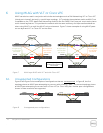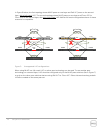
18 Using MLAG in Dell Networks
.
Local Members Status
----------------- ------
Gi1/0/14 Up
Peer Members Status
---------------- ------
Gi1/0/13 Up
Local Members Status
----------------- ------
Gi1/0/13 Up
Peer Members Status
---------------- ------
< * run command from Primary for this information >
Note: Running the show vpc brief command on the primary shows the complete status of both peer
switches. Running the show vpc brief command on the secondary shows status of the secondary
only.
Results of the command should be the same as shown above. All member ports must show “UP”, and the
“VPC interface state” must show “Active”. The show interface port-channel is another helpful tool to
let you know if the configured LAGs are up and running. This command must also only be run on the
primary peer when used in a two-tier topology. If correctly configured, ports in the primary LAG are listed
with an “Active” status. Inactive ports are usually a sign of a cabling or configuration issue.
MLAG Primary Peers only:
B and D
show interface port-channel 40
Channel Ports Ch-Type Hash Type Min-links Local Prf
------- ----------------------------- -------- --------- --------- ----
Po40 Active: Gi1/0/1, Gi1/0/2 Dynamic 7 1 Disabled
Hash Algorithm Type
1 - Source MAC, VLAN, EtherType, source module and port Id
2 - Destination MAC, VLAN, EtherType, source module and port Id
3 - Source IP and source TCP/UDP port
4 - Destination IP and destination TCP/UDP port
5 - Source/Destination MAC, VLAN, EtherType, source MODID/port
6 - Source/Destination IP and source/destination TCP/UDP port
7 - Enhanced hashing mode
Like the show vpc brief command, the show interfaces port-channel command must be run
from the primary peer to receive information from both of the peer switches.




